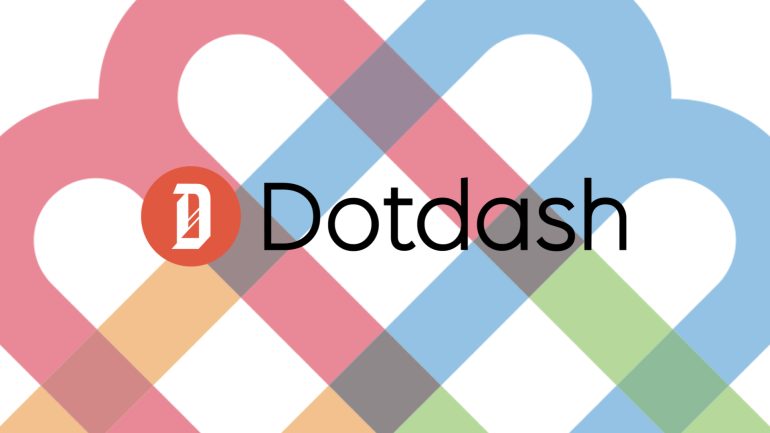- Dotdash Meredith partners with OpenAI to fortify its digital advertising domain, leveraging generative AI models and enhancing contextual targeting solutions.
- Strategic alliance aims to safeguard referral traffic amidst Big Tech’s efforts to retain users within their ecosystems.
- DDM’s Q1 earnings reveal a surge in digital revenue driven by advertising growth, despite a slowdown in core sessions attributed to a decline in Facebook referrals.
- OpenAI collaboration expected to augment DDM’s ad tech infrastructure, particularly its contextual targeting capabilities, through machine learning integration.
- DDM anticipates resilience and foresight in navigating an evolving ecosystem characterized by dynamic shifts in user behavior and technological paradigms.
Main AI News:
In the realm of collaborative ventures with AI entities, Dotdash Meredith (DDM) perceives its partnership with OpenAI as a gateway to engaging in an inevitable trajectory. “While some publishers may initially resist,” stated IAC CEO Joey Levin, “I anticipate a gradual uptake by others over time.” Though perhaps unintended, Levin’s reference echoes the notion of embracing change akin to the philosophy of Star Trek’s Borg collective. The strategic alliance, unveiled on Tuesday concurrent with its Q1 earnings disclosure, marks a pivotal move for the publisher, spotlighting avenues to fortify its digital advertising domain, which has surged by 19% year-on-year.
DDM’s modus operandi entails licensing OpenAI’s content to fuel its generative AI models, reciprocated by ChatGPT’s integration of DDM’s content within its responses to queries. Moreover, OpenAI will play a pivotal role in fostering new generative AI functionalities across DDM’s platforms, while DDM harnesses OpenAI’s technology to elevate its contextual targeting solution, D/Cipher.
Safeguarding Search Referrals through AI Synergy
Insights gleaned from a Wednesday morning dialogue between DDM’s parent company IAC and investors underscore DDM’s strategic pivot towards AI collaborations to safeguard its investments in augmenting search traffic. This initiative stands as a proactive measure countering the encroachment of Big Tech, which endeavors to retain user engagement within their ecosystems, thereby diminishing referral traffic to third-party publishers. The symbiotic relationship with AI entities emerges as one of the few viable strategies for digital publishers to uphold a semblance of referral traffic amidst a landscape where search and social platforms increasingly leverage generative AI to retain users.
Amid apprehensions surrounding Google’s Search Generative Experience (SGE), which sometimes generates article-length responses sans external links, investors queried Levin regarding potential impacts on referral traffic. While acknowledging Google’s retention of traffic, Levin affirmed the absence of direct repercussions on DDM’s operations thus far. However, through its OpenAI alliance, DDM secures continued linkage of its content within ChatGPT’s query outcomes. Given the non-exclusive nature of the arrangement, DDM retains flexibility to forge similar partnerships with other generative AI firms.
Traffic Surge and Revenue Momentum
The imperative of safeguarding referral traffic finds validation in the impetus it provides to DDM’s business dynamics. Notably, DDM’s digital revenue surged by 13% year-on-year to reach $209 million in Q1, propelled predominantly by advertising growth. Ad revenue, escalating by 19% year-on-year to $132.9 million, surpassed investor prognostications. This upswing primarily stemmed from an 8% uptick in core sessions, notwithstanding a slight deceleration compared to Q4. This slowdown is attributed to a 50% year-on-year dip in Facebook referrals, emblematic of the broader trend wherein platforms curtail outbound links in favor of internal engagement mechanisms.
Albeit the decline in Facebook referrals, constituting a mere 4% of DDM’s traffic, the overarching narrative underscores the resilience of DDM’s revenue streams amidst evolving digital dynamics. As Levin iterates, incremental traffic accrues from diversifying its site portfolio, compounded by the anticipated influx of visitors routed through ChatGPT outcomes. Moreover, DDM underscores Apple News as a prospective revenue avenue, albeit its impact remains encapsulated within licensing revenue rather than audience growth metrics.
Augmenting Contextual Targeting Capabilities
Beyond traffic augmentation, DDM’s revenue augmentation strategies extend to fortifying its ad tech infrastructure, notably through its contextual targeting solution, D/Cipher. Launched in June, D/Cipher anticipates an impetus from the OpenAI collaboration to enhance its contextual targeting prowess. The envisaged synergy aims at leveraging OpenAI’s machine learning capabilities to extrapolate audience intent signals from a diverse array of online content, transcending DDM’s proprietary sites.
A core facet of this collaboration entails OpenAI’s adeptness in parsing non-textual content such as video and images, thereby enriching D/Cipher’s data analytics spectrum. DDM’s strategic rationale revolves around harnessing OpenAI’s proficiency to decipher contextual cues across a broader inventory, thereby preempting the impending shift towards context-based targeting signals, especially in a post-third-party cookie era.
Conclusion:
Dotdash Meredith’s strategic collaborations with AI entities underscore a proactive stance towards safeguarding its digital presence amidst evolving market dynamics. By harnessing AI technologies, particularly in the realms of content generation and contextual targeting, DDM seeks to maintain its competitive edge in a landscape increasingly shaped by digital disruptions and shifting consumer preferences. This proactive approach positions DDM as a forward-thinking player in the digital publishing domain, poised to adapt and thrive amidst ongoing market transformations.

